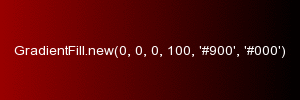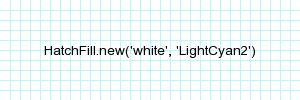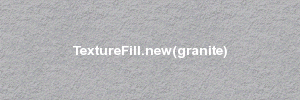The Image::View class
Introduction
A view is a rectangle in an image. Within the view pixels
can be addressed by specifying their [i][j]
coordinates. The i, j index values can identify a single pixel or
multiple pixels. Pixels can be accessed or modified
individually or collectively. Pixel channels (that
is, the red, green, blue, and opacity components) can be
accessed or modified individually or collectively. The
sync method stores modified pixels
back into the image.
class Image::View <
Object
new
Image::View.new(img, x, y, width, height) ->
aView
Description
The easiest way to use an Image::View object
is to create it with the Image#view method, which provides a
block-scoped view and automatic sync'ing. You probably won't
want to create a view by calling new.
Arguments
- img
- The image from which the view is taken.
- x, y
- The x- and y-offsets of the view relative to the
top-left corner of the image. Within the view, pixel
addresses are relative to the top-left corner of the
view.
- width, height
- The number of columns and the number of rows in the
view.
It is an error to specify a view that exceeds the
boundaries of the image.
[][]
view[i][j] ->
aPixel or anArray
Description
Return one or more pixels in the view. If i and j are each
a single integer value, returns a single pixel. For any other
indexes, returns an array of one or more pixels. If any index
exceeds the boundaries of the view, raises
IndexError.
Arguments
The i index identifies a set of
rows in the view. The j index
identifies a set of columns in the view. The pixels that are
returned are the intersection of these two sets. The indexes
can be:
- omitted
- If i is omitted, all the rows
are used. If
j is omitted, all the columns are
used.
- an integer
- or an object that can be converted to an integer. A
single integer identifies a single row or column. Identify
a single pixel by specifying integers for both indexes. If
the index is negative, counts from the bottom row or right
column of the view.
- start, length
- Identifies the set of
length rows or
columns starting with start. If
start is negative, starts at the bottom row or
right column of the view.
- an object that responds to
each
- The index may be any object that responds to
each by returning a sequence of objects that
can be converted to integers. An array with integer values
or a range of integers are two examples.
Examples
# Get the 2nd pixel in the 4th row of the view.
pixel = view[3][1] # returns a pixel
# Returns an array with only one value
pixels = view[[3]][[1]]
# Get all the pixels in the 4th row
pixels = view[3][]
# Use arrays to specify a non-contiguous set of rows and columns
pixels = view[[1,3,5]][[2,4,6]]
# Use ranges to specify a contigous set of rows and columns
pixels = view[1..5][2..6]
[][].red
[][].green
[][].blue
[][].opacity
[i][j].red -> anInteger or
anArray
[i][j].green -> anInteger or
anArray
[i][j].blue
-> anInteger or anArray
[i][j].opacity -> anInteger or
anArray
Description
If the indexes identify a single pixel, these methods
return the value of the red, green, blue, or opacity channel
of that pixel. If the indexes identify more than one pixel,
these methods return an array of values. See
[][] for a description of possible index
arguments.
Examples
# Get the value of the green channel of
# the top-left pixel in the view.
view[0][0] = Pixel(0,128,255)
g = view[0][0].green # returns 128
# Get the maximum value of the red channel
# for all the pixels in the top row of the view.
m = view[0][].red.max
[][]=
view[i][j] = rvalue
-> nil
Description
Replaces each pixel identified by the indexes with a
duplicate of rvalue. The rvalue is
either a Pixel object or a color name. If
rvalue is a color name, calls
Pixel.from_color to create a pixel.
Arguments
The indexes are the same as [][], above.
- rvalue
- Either a pixel or a color name.
[][].red=
[][].green=
[][].blue=
[][].opacity=
[i][j].red = anInteger ->
nil
[i][j].green = anInteger ->
nil
[i][j].blue
= anInteger -> nil
[i][j].opacity = anInteger ->
nil
Description
Assigns anInteger to the red, green, blue, or
opacity channel of the pixel or pixels identified by the
indexes.
Examples
# Set the red channel of all the pixels in the 2nd
# row of the view to MaxRGB
view[1][].red = MaxRGB
# Set the green channel of the pixel at [20][30] to
# half that of its left-hand neighbor.
view[20][30].green = view[20][29].green * 0.5
sync
view.sync(force=false) ->
true or false
Description
If any of the pixels in the view have been modified, this
method stores them in the image. If no pixels have been
modified, this method has no effect.
Arguments
- force
- If
true, forces the view pixels to be
stored in the image even if none have been modified.
Returns
Returns
true if the pixels were
stored in the image either because the
dirty
flag was
true or
force was
true,
false otherwise.
dirty
dirty=
view.dirty -> true or
false
view.dirty = true or false
Description
Any modification to a pixel in the view causes the
dirty attribute to be set to true.
You can (although normally you don't need to) set
dirty=true to force sync to store
the pixels in the image, or set dirty=false to
keep sync from storing the pixels.
x
y
width
height
x -> anInteger
y -> anInteger
width -> anInteger
height -> anInteger
Description
The x, y, width, and
height arguments specified when the
view was created.
The Geometry class
Introduction
The Geometry class contains the same information as an
×Magick geometry
string. Geometry objects are interchangable with geometry
strings.
class Geometry <
Object
new
Geometry.new(width=nil, height=nil,
x=nil, y=nil, flag=nil) ->
aGeometry
Description
Constructs a new Geometry object.
Attributes
A geometry string has the general form
"WxH+x+y[!@%<>]. In a Geometry object,
- width
- specifies the W value
- height
- specifies the H value
- x, y
- specify the x and y values, respectively
- flag
- one of the constants shown in this table:
Geometry flag constants
Constant
name |
Geometry
string flag |
Explanation |
| PercentGeometry |
% |
Normally the attributes are treated as pixels. Use
this flag when the width and
height attributes represent
percentages. For example, 125x75 means 125% of
the height and 75% of the width. The x and
y attributes are not affected by this
flag. |
| AspectGeometry |
! |
Use this flag when you want to force the new image to
have exactly the size specified by the the
width and height
attributes. |
| LessGeometry |
< |
Use this flag when you want to change the size of the
image only if both its width and height are smaller the
values specified by those attributes. The image size is
changed proportionally. |
| GreaterGeometry |
> |
Use this flag when you want to change the size of the
image if either its width and height exceed the values
specified by those attributes. The image size is changed
proportionally. |
| AreaGeometry |
@ |
This flag is useful only with a single
width attribute. When present, it means the
width attribute represents the total area of
the image in pixels. |
If any attribute is omitted the default is nil or 0.
Example
g = Magick::Geometry.new(100,200,nil,nil,Magick::AspectGeometry)
The Pixel class
Introduction
A pixel describes the smallest individually addressable
part of an image. In the RBG colorspace, a pixel's
color is described by its intensity in the red, green, and
blue channels. Its opacity is described by its intensity in
the opacity (also called alpha, or matte) channel. In the
CMYK colorspace a pixel's color is described by its intensity
in the cyan, magenta, yellow and black (K) channels.
Intensity is a value between 0 and MaxRGB.
Usually, RMagick methods operate on entire images or on
groups of pixels that have been selected by their position or
color. Some methods, such as pixel_color and view, operate on individual pixels or
even on the RGBA (or CMYK) components thereof.
class Pixel <
Object
mixes in Comparable, Observable
new
Pixel.new(red, green,
blue, opacity) -> aPixel
Description
Constructs a pixel object from the specified red, green,
blue, and opacity intensities. The intensity is a number
between 0 and MaxRGB.
Attributes
- red, green, blue
- The red, green, and blue intensities of the pixel,
respectively. If the colorspace is CMYKColorspace, these
attributes are interpreted as the cyan, magenta, and yellow
intensities.
- opacity
- The opacity level. Higher intensities are more
transparent. If the colorspace is CMYKColorspace, this
attribute is interpreted as the black intensity.
- cyan, magenta, yellow, black
- These attributes are aliases for
red,
green, blue, and
opacity, respectively.
from_color
Pixel.from_color(color_name) -> aPixel
Description
Constructs a new Pixel object from the color name. Raises
ArgumentError if the name is unknown.
from_HSL
Pixel.from_HSL([hue, saturation, luminosity]) ->
aPixel
Description
Constructs a pixel object from the specified array of 3
values: hue, saturation, and luminosity.
<=>
pixel1 <=> pixel2 -> -1, 0, or 1
Description
Returns -1, 0, or 1 depending on if pixel1 is "less than," equal, or "greater than"
the pixel2.
Since there is no way to rank order pixels, and thus
determine if one pixel is "greater than" or "less than"
another, this method uses an arbitrary algorithm that ensures
these two conditions:
- pixels with equal RGBA (or CMYK) values compare equal,
and
- comparing the same two unequal pixels always returns
the same result.
Returns
-1, 0, or 1
See also
fcmp
fcmp
pixel.fcmp(aPixel, fuzz=0.0,
colorspace=RGBColorspace) ->
true or false
Description
Returns true if the argument is the same color as
pixel.
Arguments
- pixel
- The pixel to which the receiver is compared.
- fuzz
- The amount of fuzz to allow before the colors are
considered to be different.
- colorspace
- If the pixels are in the CMYK colorspace, specify
Magick::CMYKColorspace.
Returns
true or false
See also
<=>
intensity
pixel.intensity() ->
anInteger
Description
Returns the intensity of the pixel. The intensity is
computed as 0.299*R+0.587*G+0.114*B.
to_color
pixel.to_color(compliance=AllCompliance, matte=false, depth=QuantumDepth) ->
aString
Description
Returns the color
name corresponding the the pixel values. If there is no
such named color in the specified color standard, returns a
string in the form "#RRGGBBOO" or, if the depth is 16,
"#RRRRGGGGBBBBOOOO".
Arguments
- compliance
- A ComplianceType
constant. The default value of AllCompliance causes
to_color to search for a color name in any of
the 3 defined color standards.
- matte
- If false, the pixel's opacity attribute is
ignored.
- depth
- An image depth. The default is the quantum depth used
when ×Magick was compiled. The values 16 and 32 can
be used only when ×Magick was compiled with the
appropriate QuantumDepth.
See also
Compare this method to Image#to_color, in which the
matte and depth values are taken from an image.
to_HSL
pixel.to_HSL ->
anArray
Description
Converts the RGB representation of the pixel to hue,
saturation, and luminosity values.
Returns
An array of the form [hue, saturation,
luminosity].
Struct classes
Introduction
These classes are created by the Struct class and are used
to create objects used as attribute and argument values in
other RMagick classes. Like all the classes created by
Struct, these classes define both getter and setter methods
for their attributes. That is, for an attribute x
both the x and x= methods are
defined.
The Pixel and Geometry classes
define additional constructors and conversion methods.
class AffineMatrix < Struct
new
AffineMatrix.new(sx, rx, ry, sy, tx, ty) ->
anAffineMatrix
Description
An AffineMatrix object describes a coordinate
transformation. This object is used as an argument to the
Image#affine_transform,
Image#composite_affine,
and Draw#affine
methods.
Attributes
- sx, sy
- The amount of scaling on the x- and y- axes.
- rx, ry
- The amount of rotation on the x- and y-axes, in
radians.
- tx, ty
- The amount of translation on the x- and y-axes, in
pixels.
class Chromaticity < Struct
new
Chromaticity.new(red_primary, green_primary, blue_primary, white_point) -> aChromaticity
Description
A Chromaticity object represents chromaticity values for
the Image#chromaticity
attribute.
Attributes
The attribute values are Primary
objects.
- red_primary
- Red primary point (e.g. red_primary.x=0.64,
red_primary.y=0.33)
- green_primary
- Green primary point (e.g. green_primary.x=0.3,
green_primary.y=0.6)
- blue_primary
- Blue primary point (e.g. blue_primary.x=0.15,
blue_primary.y=0.06)
- white_point
- White point (e.g. white_point.x=0.3127,
white_point.y=0.329)
class Point <
Struct
new
Point.new(x, y) -> aPoint
Description
The value of the pixels_per_em attribute in
the TypeMetric struct returned by Draw#get_type_metrics is a
Point object..
Attributes
- x
- Character width
- y
- Character height
class Primary <
Struct
new
Primary.new(x, y, z) ->
aPrimary
Description
See class Chromaticity.
Attributes
- x
- X ordinate
- y
- Y ordinate
- z
- Z ordinate. This attribute is always ignored.
class Rectangle < Struct
new
Rectangle.new(width, height, x, y) -> aRectangle
Description
The value of the Image#tile_info and Image#bounding_box
attributes.
Attributes
- width
- Rectangle width
- height
- Rectangle height
- x
- Offset from the left edge of the image
- y
- Offset from the top edge of the image
class Segment <
Struct
new
Segment.new(x1, y1, x2, y2) -> aSegment
Description
The value of the bounds attribute in the
TypeMetric
class.
Attributes
x1, y1, x2, y2
Fill classes
Introduction
The Image#new and ImageList#new_image methods accept
a Fill object as an optional third argument. A
Fill object is an instance of a Fill
class. Fill classes are designed to support custom
background fills. Each Fill class defines only
two methods, initialize and fill.
The initialize method is called from the
application to create an instance of the fill class. It
accepts any arguments and does whatever is necessary to
create the fill. The fill method is called from
the initialize method of the new image object, after the
image is completely initialized. The fill method
gets the image as its only argument and sends whatever
methods are necessary to the image to fill the image's
background.
RMagick supplies three Fill classes,
HatchFill,
GradientFill, and
TextureFill. These classes are
explained below. The HatchFill class is intended
as an example of how to write a Fill class and
is written in pure Ruby. You can read it in RMagick.rb.
class GradientFill < Object
new
GradientFill.new(x1,
y1, x2, y2, start_color,
end_color) -> aGradientFill
Description
Creates a gradient fill. The x1,
y1, and x2,
y2 arguments describe either a line
or a point. If x1 != x2 or y1 !=
y2, then the arguments describe the
starting line for the gradient. The gradient will start with
start_color at the starting line and
gradually transform to end_color as
the distance increases from the starting line.
If x1 == x2 and y1 ==
y2, the gradient radiates from the
specified point, gradually transforming from start_color to end_color.
The line or point does not have to lie within the image
bounds.
Arguments
- x1, y1
- One of the starting line end-points.
- x2, y2
- The other end-point on the starting line.
- start_color
- The color at the starting line.
- end_color
- The color to which the gradient transforms.
Example

class HatchFill < Object
new
HatchFill.new(background_color,
hatch_color='white', dist=10) -> aHatchFill
Description
Creates a cross-hatched fill.
Arguments
- background_color
- The image background color.
- hatch_color
- The color of the cross-hatch lines.
- dist
- The distance between cross-hatch lines, in pixels.
Example

class TextureFill < Object
new
TextureFill.new(texture_image)
-> aTextureFill
Description
Creates a texture fill by tiling the texture_image to fill the image.
Arguments
The texture to be used as the background. May be an image
or imagelist. If texture_image is an
imagelist, uses the current image.
Example



